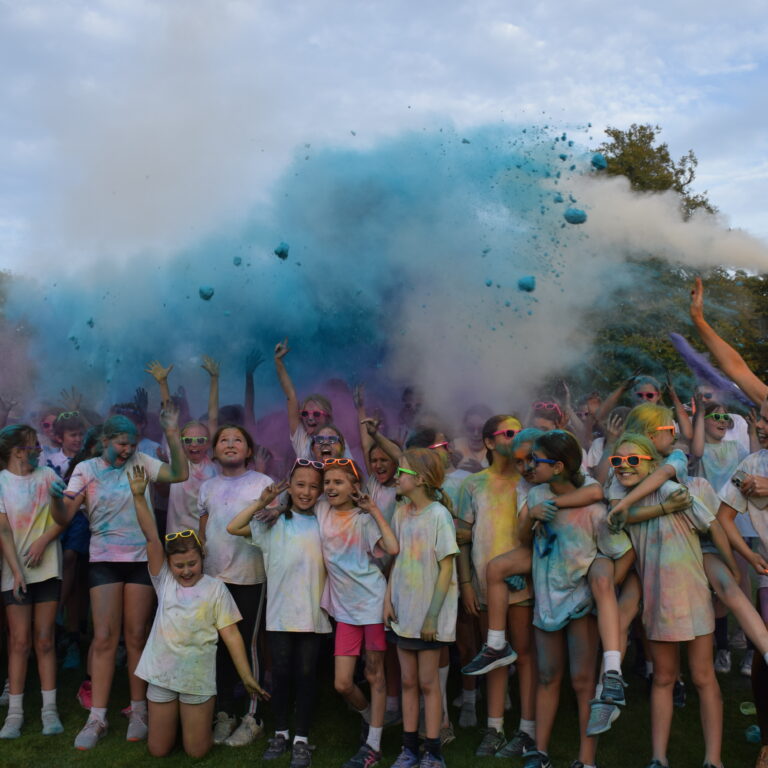During February half term, the Year 10 and Year 11 Geography students embarked on a fascinating trip to Iceland, a country renowned for its stunning landscapes, unique geological features, and geothermal activity. The students were given a first hand experience of the dynamic processes that shape our planet, from volcanic eruptions to the power of tectonic plates.
Day 1: An Introduction to Iceland's Geology
After a morning flight, the students landed in Iceland, eager to explore the wonders that awaited them. Their first stop was the Bridge Between Continents, a remarkable location where the North American and Eurasian tectonic plates are slowly diverging. The students had the opportunity to stand in both North America and Europe at the same time, a unique experience that highlighted the geological forces at work beneath the Earth's surface.
The group then visited the geothermal hot springs, a staple of Icelandic natural beauty. Although the wind was too strong to fully appreciate the sulfuric smells, the students marvelled at the hot, steaming waters and learned how Iceland uses geothermal energy for heating and power. On their way to the hotel, the guide shared the story of Grindavik, a town recently evacuated due to a volcanic eruption. The town's proximity to the newest lava fields in Iceland struck a sombre note, with the empty homes serving as a reminder of the dangers posed by the ever-active volcanic landscape.
That evening, the promise of the Northern Lights hung in the air. The students settled into their rooms, while their teachers kept a watchful eye on the sky. Just after 10:30 pm, the magical moment arrived, and the class was roused from their beds to witness the incredible dance of the Aurora Borealis in the night sky. It was a breath taking sight, leaving everyone in awe of the beauty of Iceland's natural wonders.
Day 2: Hiking and Exploration
Day two began with an early start as the students set off for a hike around the Kerid Crater Lake. The rising sun illuminated the stunning crater, making for a perfect start to the day. The group then headed to Thingvellir National Park, a UNESCO World Heritage site, where they explored the rift valley and stood on the boundary between the two tectonic plates. This was followed by a short visit to Gullfoss Waterfall, which means ‘Golden Falls’, one of Iceland's most famous natural landmarks. The students also witnessed the eruption of Geysir a few times, the world-renowned hot spring that gave rise to the term "geyser" which, when correctly pronounced, rhymes with “freezer". They eagerly captured the eruptions on video, trying to get the perfect slow-motion shot.
In the afternoon, the group visited the Fridheimar Greenhouses, where they learned how Iceland uses geothermal energy to grow fruits and vegetables in an otherwise inhospitable environment. Students were treated to a tasting of the delicious tomatoes grown in the greenhouses, a refreshing change after their action-packed day of exploration.
Day 3: A Day of Adventure
The third day was packed with excitement, beginning with a challenging climb on the Solheimajokull Glacier. The students donned crampons, ice axes, and harnesses before setting off for the glacier. The 30-minute walk to the glacier's snout was followed by an exhilarating climb up onto the ice. The wind was strong, but the views from the top were worth every step. The students took photos and hacked at the ice with their axes, fully immersing themselves in the experience.
Next, the group climbed the 527 steps to the top of Skogafoss Waterfall, where they were treated to a panoramic view of the surrounding landscape. The day's adventure continued as they braved the intense winds at Reynisfjara, the black sand beach. Despite the powerful gusts threatening to blow them over, the students managed to take in the stunning basalt columns and the force of the Atlantic waves before seeking shelter on the bus.
The final stop of the day was the Lava Show, an incredible interactive experience that allowed the students to witness lava flowing up close and observe how it interacts with ice. It was an unforgettable experience, bringing the power of Iceland's volcanic activity to life.
Day 4: The Final Day of Exploration
On the final day, the group began with another waterfall visit, where the spray from the falls left many of the students drenched. They then explored the Lava Centre, where they learned about the various volcanic eruptions that have shaped Iceland's history. The students were particularly fascinated by the potential impact of an eruption from Katla, one of Iceland's largest volcanoes.
The group then visited a geothermal power station, where they learned how Iceland harnesses the heat from beneath the Earth to generate electricity. This geothermal energy has helped Iceland keep its household bills remarkably low, with some paying as little as £6 per month for electricity.
The trip culminated with a visit to the Blue Lagoon, where the students had the opportunity to relax in the warm waters, enjoy face masks, and sip iced drinks after several days of exploration. It was a perfect way to unwind before heading back home.
The trip to Iceland was an enriching experience for all the students, providing them with valuable insights into the geology, geothermal activity, and volcanic landscape that make Iceland one of the most unique countries on Earth. From hiking glaciers to witnessing the Northern Lights, the students had the opportunity to explore some of the world's most incredible natural wonders, making memories that will last a lifetime.
Ms Hannah Savage
Head of Geography


